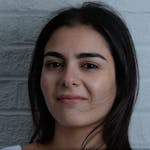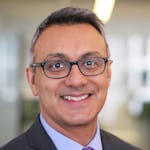People across the U.S. are using the Sustainable Development Goals as a road map to build back better by turning these global ambitions into local action.
In the Midwest, that means investing in community-based solutions that address the unique challenges facing rural areas. To learn more about what this looks like, I spoke with Anna Wasescha of West Central Initiative in Minnesota about sustainable agriculture, pandemic recovery, and welcoming newcomers to small town America.
Tony Pipa: Let’s start by talking about your organization, some of the hallmarks of the communities that you serve, and some of the challenges they’re facing as well.
Anna Wasescha: In our area, the economy is mostly agriculture, recreation, and tourism because we have so many lakes. Minnesota is known as the Land of 10,000 Lakes, and the county I live in has over a thousand lakes on its own. When you fly over it and you look down, it looks like it’s more water than land. It’s quite remarkable.
So all of those things — agriculture, recreation, the outdoors — are directly related to the Sustainable Development Goals. Those are chief assets that we need to protect into the future.
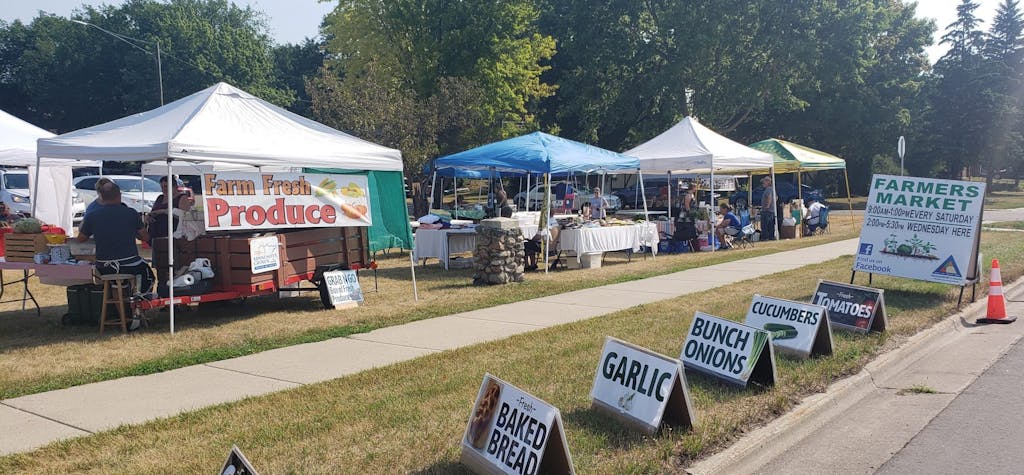
I would say some of the challenges have to do with the viability of communities with populations under a thousand people that might lack the larger school districts, hospitals, retail, and commercial industries that draw people to them. There’s a sense that we’re isolated from urban areas, maybe looked down upon, so there’s an inferiority complex.
At the same time, we have a really strong sense of independence and power, that what we contribute to the economy overall is essential to American life. We feed the world, so to speak. There’s a lot of pride in that identity. But while agriculture used to be very labor-intensive, now it’s not, so the population in rural areas is declining even as agricultural output increases. That’s a contradiction, but that’s the way it’s working. So people in rural areas like ours have to find new roles and new identities within the economy.
West Central Initiative in Minnesota was created by the McKnight Foundation in the 1980s following tremendous financial loss as a result of farming bankruptcies and a timber and mining crisis. The idea was to create six regional foundations on the ground closer to communities to help them recover. We serve nine counties, and a portion of the White Earth Nation, a Native American community, also lies within one of our counties. We provide grants and loans to local nonprofit organizations and also hold convenings to bring different groups together and change the conversation.
TP: So from that place, how did you first become involved with the Sustainable Development Goals? What brought you to this thinking about sustainable development, and how are you applying this set of global goals to your work and your region?
AW: I want to underscore the influence of things that happened in the last year. One was the global pandemic. It’s as though we were all in a state of heightened awareness as well as anxiety that goes with quarantining and the death toll mounting day after day after day.
I think one thing that we actually found, which is reassuring, is that the Sustainable Development Goals are universal; they act like connective tissue. No matter where you’re from, we all understand that poverty should be eliminated, that responsible production and consumption matters, that protecting life underwater is important.
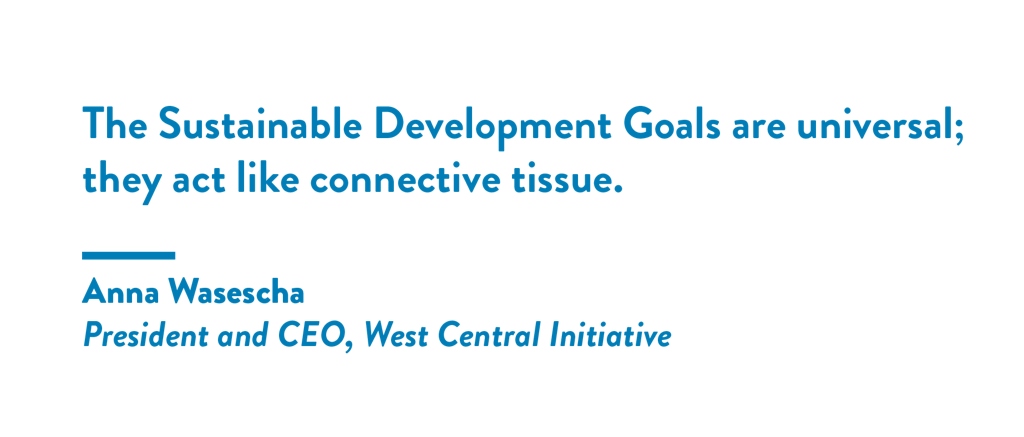
Here’s another one: The housing crisis, right? Especially now, as a result of the economic pressures created by COVID-19, houses don’t appraise at a high enough value for people to borrow the money they need to buy them at the market rate. The cost of building new housing is higher than ever, and the supply of existing housing can’t meet the demand. That’s something I think people in rural areas agree on, no matter what your political school of thought might be. People understand you’ve got to eat, you’ve got to have a roof over your head — these are the Sustainable Development Goals in a nutshell.
So the Sustainable Development Goals gave us something to agree about during a period of political and social turmoil as a result of these huge moments in our history in this country and around the world.
For West Central Initiative specifically, the Sustainable Development Goals help us link the community planning work we do with our philanthropy. For example, to address the immediate COVID-19 needs of our region, we launched the Resiliency Fund which provided grants aligned with the SDGs to more than 80 organizations in our communities. We also brought on an undergraduate student who mapped the SDG alignment of 600 nonprofits in our area on the SDG movement map and we are also creating an interactive SDG dashboard, building on the work of Hawaii and the Aloha+ Dashboard.
TP: The central theme of this series is about “bringing the SDGs home.” What does that look like to you?
AW: I’ll give you one example. One organization that received a grant from us works with new Americans to give them access to land, tools, and markets so they can grow food that is culturally relevant for their own cuisine and, thereby, creating a food supply chain for their communities.
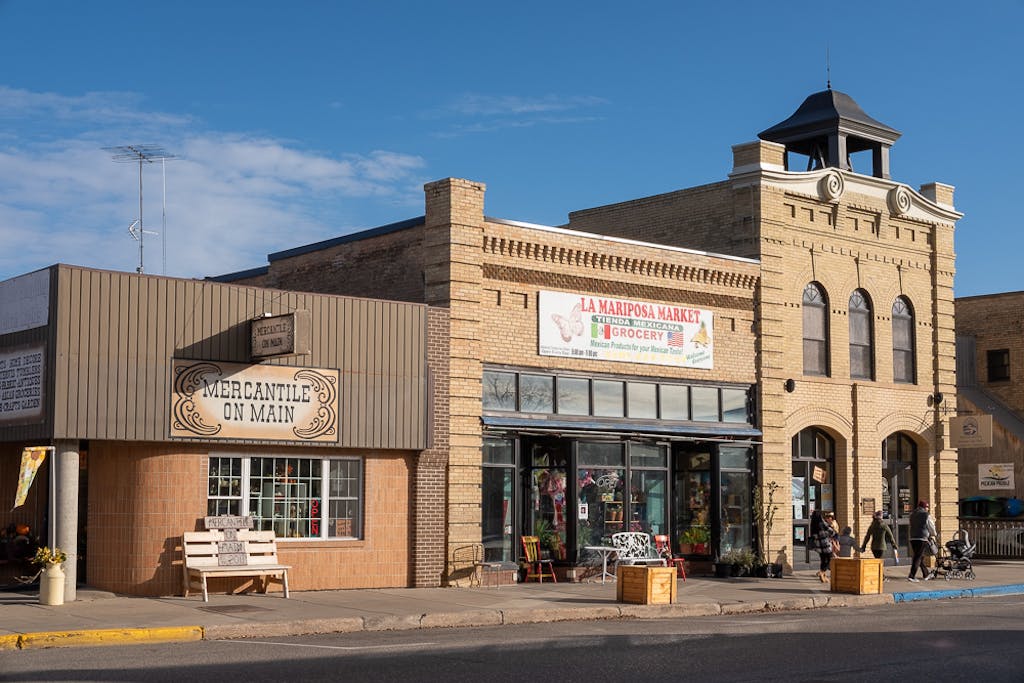
This is especially important in smaller towns with meatpacking plants, which often bring in immigrants from places like Mexico and Latin America. In one community of about 3,000 people, there’s a mercado that carries an array of imported food that is central to Latin American cuisine. We’ve also been able to help start a local farmers market on the same block where you can buy fresh, locally grown foods to cook Mexican dishes.
This approach doesn’t just offer a way for these new residents to feed their families, earn money, and gain skills; there’s a therapeutic and cultural value to growing and cooking your own food and having a place to share it. There’s a cascading effect that brings more people into the public square. It helps revive our main streets and makes newcomers feel more welcome, all of which is incredibly important.
TP: It strikes me that all of those projects show how sustainable development highlights the interdependence of social, economic, and environmental dimensions that together are necessary for healthy communities.
In that one example, you’re talking about economic opportunity, food security, local food systems, and also building connections between newcomers and longtime residents.
AW: Exactly. And creating opportunities for them to see and be seen within the community.
I spent a dozen years running community gardening projects in the Twin Cities, especially focused on children and new Americans. And one of the things I really saw during that experience was the way to get people involved in the environmental movement was to give them a way in. Everybody can do something about the environment. And then from there, they begin to build alliances with people they might never have met. But they all share a sense of agency and accomplishments from growing their own food and taking collective action.
I love the concept of citizen-managed open spaces — the parks, the gardens, the green spaces in your environment. No matter how urban or rural your hometown might be, we all have an opportunity and a responsibility to help take care of it.
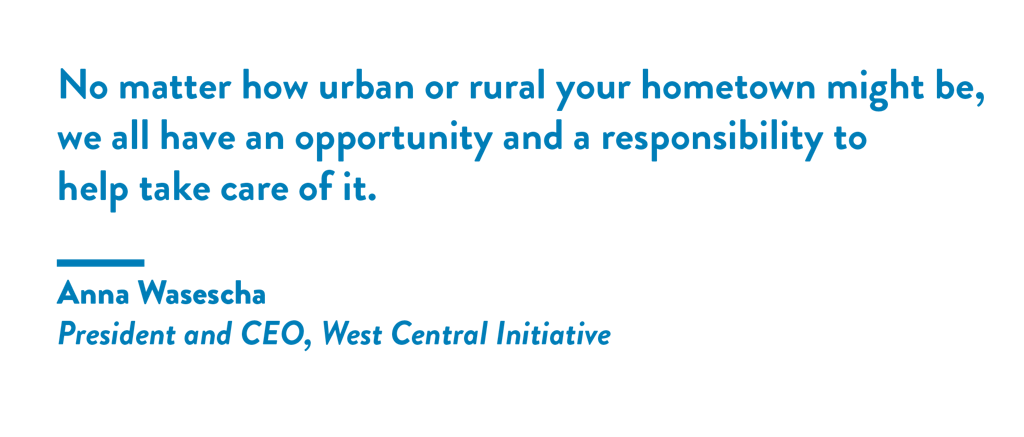
If the idea with the SDGs is to leave no one behind, it’s only when you examine these community spaces and systems that you find the reasons why some are being left behind.
TP: I think that’s one of the great unspoken truths when it comes to the “Leaving No One Behind” agenda, especially in the U.S. where awareness of the SDGs isn’t as high. If we’re really truly going to leave no one behind, you have to break through the systems that have put some people on the outside rather than on the inside.
When it comes to building back better from COVID-19, what gets you excited about the possibilities? What energizes you about turning this crisis into an opportunity? And what worries you?
AW: I am in particular very excited about sustainable agriculture, which holds a great deal of potential for addressing a raft of the SDGs while also realigning and reenergizing rural economies. We can grow things in vastly better ways to protect the soil and the water.
Take the perennial grain crop called Kernza, which was developed at the Land Institute in Kansas to protect and nourish the soil better than annual crops like corn and soybeans, which have to be replanted every year. The University of Minnesota is now promoting Field Pennycress as a cover crop. There’s a lot of different ways that we can farm, even on an industrial scale. It’s going to take much more research and development, but we’re on the right path.
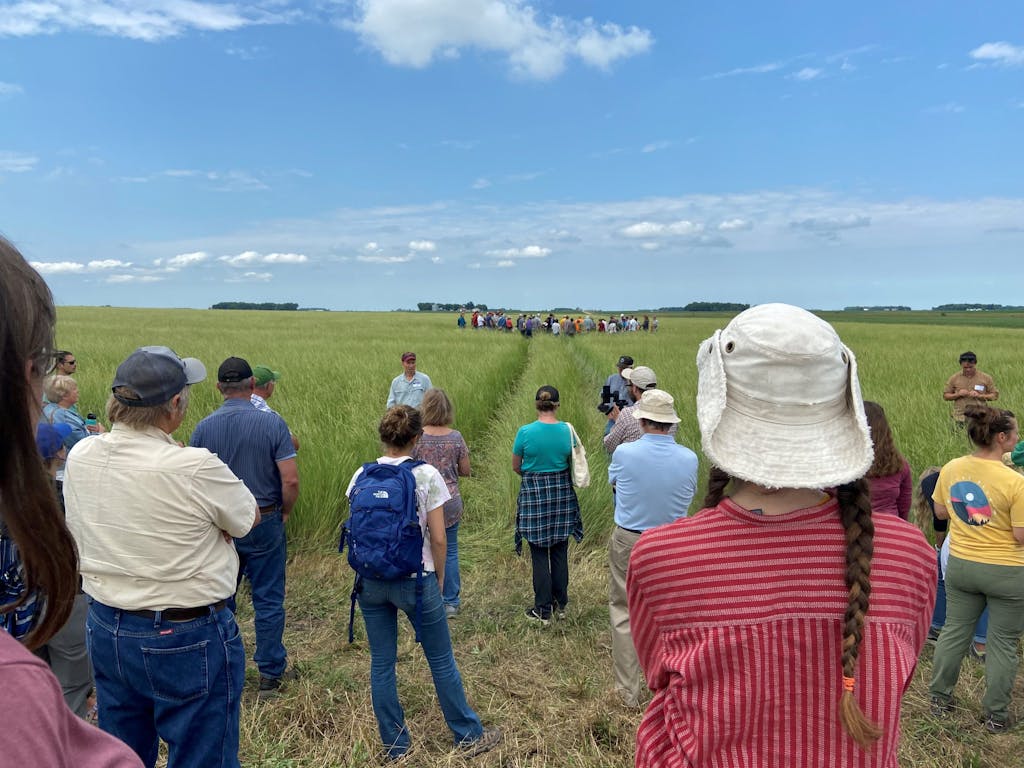
We’re getting the great majority of our fresh produce from other places that rely on water supplies that are quickly diminishing. So the closer to home you are — the “60-mile plate” as it’s sometimes called — the more sustainable our food production would be. That local approach also helps employ people in our communities and build the rural economy. And then there’s bio-based manufacturing and figuring out a way to monetize the value of carbon sequestration in fields and in forests, and then paying farmers and land stewards for that.
All of this leads to a sense of dignity and self-sufficiency while making better use of the resources we have in hand and taking a seventh-generation view on it.
TP: The example you just laid out — about farmers being paid for carbon sequestration, and then being a part of the solution around climate change as well as sustainable agriculture — again really highlights the interdependence and the intersections of the SDGs.
That was one of the big things that distinguished the SDGs from previous frameworks like the Millennium Development Goals. We’re better at recognizing the connections and linkages. You can create a single solution that addresses multiple problems at once, but you can also inadvertently create a new problem if you don’t consider how it’s all related. We don’t want economic development that ruins our environment, for example.
This is why I’m fascinated by our conversation today. When I was sitting in the UN General Assembly helping develop these goals, we were doing it on the behalf of national governments. So our entire frame of reference was thinking in terms of national policy interventions and the resources, and what’s under your jurisdictional control as a national government.
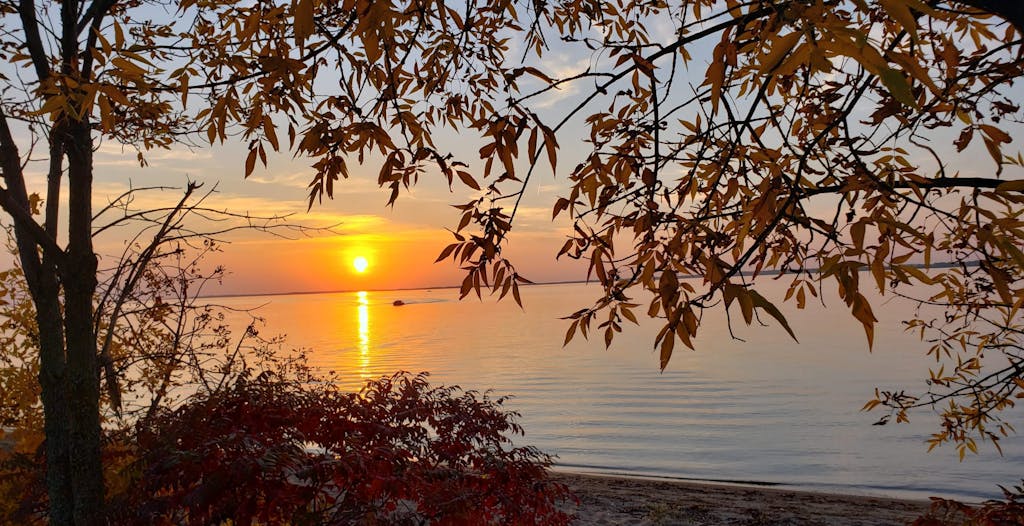
What I think we’ve really seen with the SDGs is the importance for all sectors of society to address these global challenges together. And that local action is as important as national or global commitments.
AW: And then of course all of this happens against the backdrop of what actually is occurring globally, like the rapid melting of the Antarctic shelf.
That’s why this idea that we have a decade left to achieve these goals by 2030 is a solemn reminder of how urgent the work is.
We’ve got these markers — these 17 Sustainable Development Goals — to anchor and guide us. Through these goals, we can share knowledge and build relationships with people we’ve never met in countries we’ve never stepped foot in because we’ve all got this same compass directing us.
Are we heading in the right direction? The SDGs are our North Star.
Tony Pipa is a Senior Fellow at the Brookings Institution’s Center for Sustainable Development. In 2015, he led the U.S. delegation at the UN to negotiate and adopt the SDGs.
This conversation is part of a larger project launched by the UN Foundation and the Brookings Institution to build and support American leadership on the SDGs.
Sign up for our monthly newsletter to receive information about upcoming events, news, and stories that highlight American Leadership on the SDGs.
Featured Photo: West Central Initiative


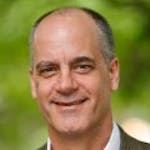
 View All Blog Posts
View All Blog Posts